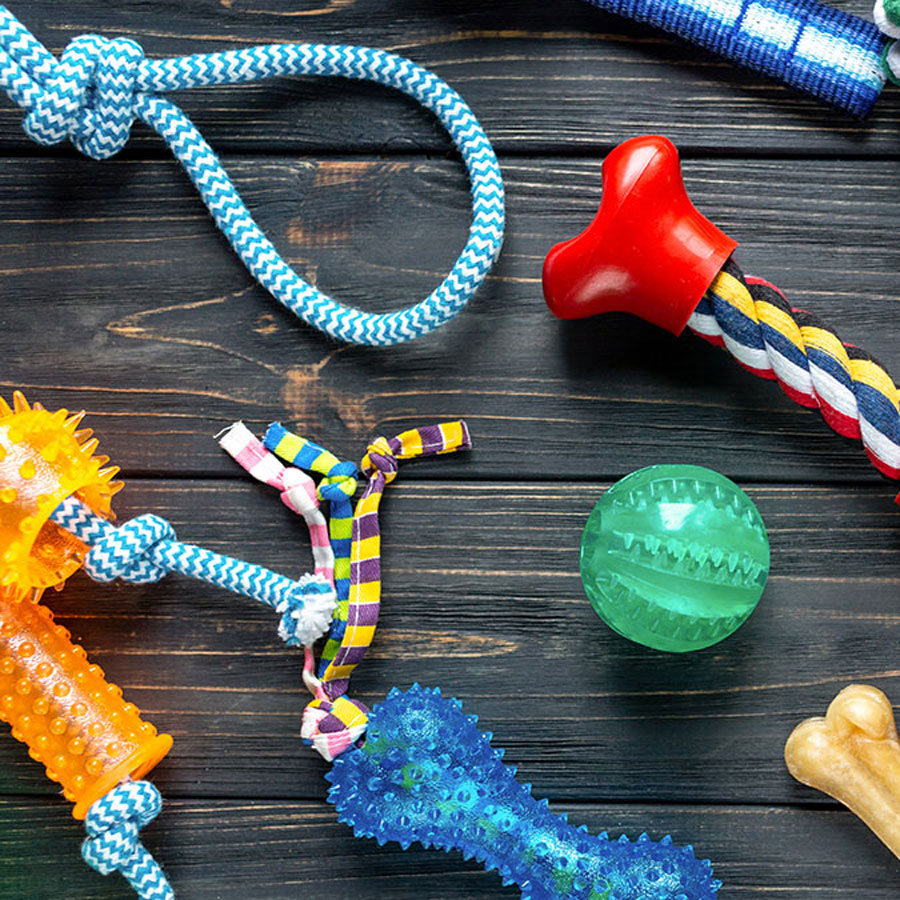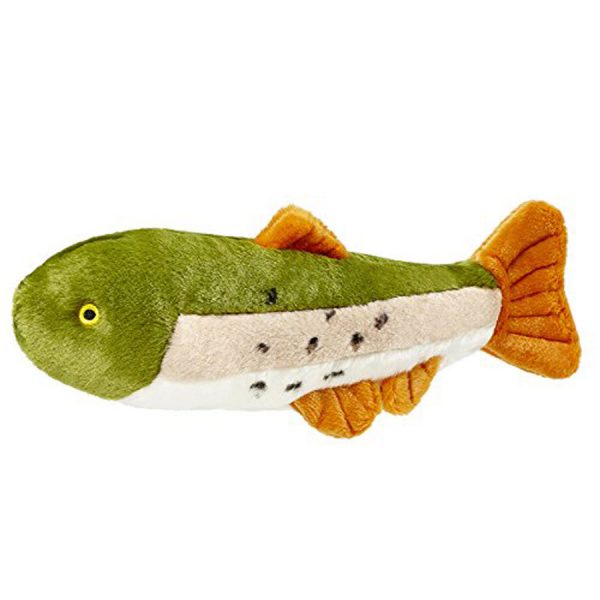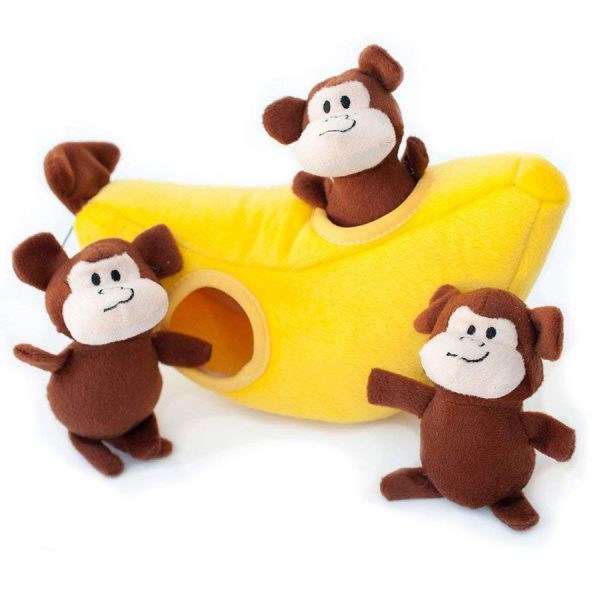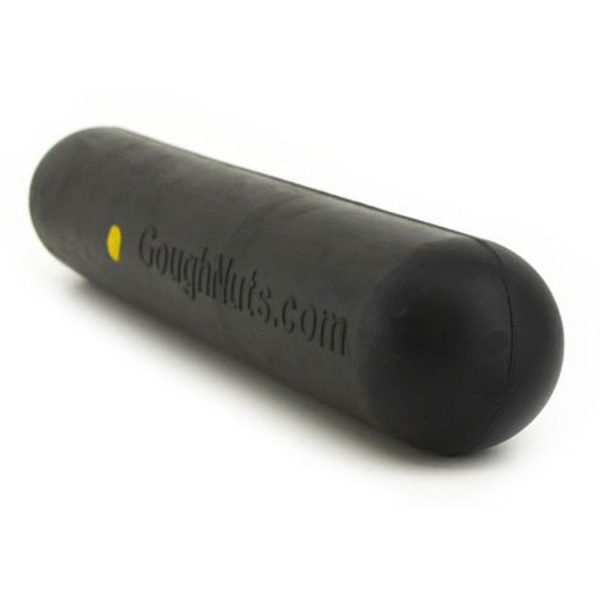Learning about dog toy types will help you choose the best suitable toy for your pet.
The most common dog toy types are plush, chew, fetch, and interactive, also known as self-amusement toys designed for independent play.
Each dog is unique and prefers a different type of toy. The dog’s biting force, energy level, and special needs also affect the toy choice.
Many dogs appreciate a wide selection of toys, whereas others have their favorite toy, which they won’t exchange for anything in the world.
Regardless of your dog’s preferred toy type, ensure that the toy is safe and durable to minimize choking risks and avoid replacing it weekly.
1. Plush
People usually associate plush toys with kids, but they are equally suitable for dogs. Plush dog toys can also be called comfort toys because they aren’t particularly entertaining but help dogs feel better.
A plush toy is an item a dog bonds with. Many dogs sleep with their plush toys and carry them around like babies. Often, dogs have their favorite plush toy since puppyhood and refuse to change it even at a senior age.
For this reason, plush toys for dogs should be durable and have dog-safe stuffing because they can be torn apart from constant carrying in the dog’s mouth. Often, plush toys have a squeaker inside.
Although many dogs find plush toys comforting and sleep with them to relieve anxiety and stress, some actually play with them, imagining the toy is prey.
Plush dog toys with squeakers are especially entertaining because dogs try to “kill” their prey by breaking the squeaker. After the toy becomes silent, they continue carrying it around in their mouths and shaking it.
Plush toys don’t typically last long with such aggressive hunters, but they are plenty of fun. If your dog loves tearing apart plush toys, consider extra tough ones for a longer chew time.
There are even stuffing-free plush dog toys that reduce the risk of choking. They are equally soft and fun but much safer.
2. Interactive
Interactive dog toys are intended for independent play, although you can also use them for bonding with your dog. The variety of self-amusement dog toys is endless, so everyone can find one to make their dog happy.
Chew and co-play toys such as tugs and tennis balls have been around for ages, but interactive dog toys are a fairly new invention. The problem is that many dogs find chew toys and plushies boring because they don’t do anything.
As for co-play toys, tug of war and fetch are undoubtedly amusing, but they require the owner’s involvement. And if the owner is constantly at work, the dog is left under-exercised and bored, which leads to destructive behavior.
Sure, some dogs are creative and goofy enough to play without any toys, but interactive toys double the fun even for such dogs. However, you need to teach your dog to use interactive toys.
This dog toy type has many subtypes: electronic, treat-dispensing, ball launchers, hide-and-seek, specialized, and DIY.
Electronic self-amusement dog toys are perfect for dogs left alone for prolonged periods. They come in different forms – for example, some move a laser pointer around the room, making the dog chase it.
If you have a cat, it will also appreciate an electronic laser dog toy, but beware – your pets might leave your house a mess.
Other electronic dog toys present the pet version of Simon Says, teaching dogs new commands in a fun way, gradually increasing the difficulty. When a dog completes the sequence, the toy releases a treat.
Some dogs might not be motivated enough to perform commands for treats, but intelligent dogs that need plenty of mental stimulation will find this game highly amusing.
Some electronic dog toys take pictures of your dog while you’re away or feature two-way speakers, enabling you to communicate with your pet during playtime.
Treat-dropping interactive dog toys can be electronic or mechanical. They might request a dog to perform a command or get the treat using its tongue. Such toys are great for training and entertaining gluttonous dogs that eat too fast.
The purpose of ball-launching dog toys is apparent – they replace the owner, enabling the dog to play fetch and other ball games alone.
Although the ball count is limited, a dog can learn to load the toy and paw the trigger without human help. The best ball-launching dog toys come with a handy mobile app allowing you to adjust the ball throwing distance or angle.
If your dog admires tug of war, but it’s either too strong for you or you are busy, consider interactive tension toys. Unlike fancy electronic treat-dispensing toys, interactive tension toys are fairly simple devices.
Usually, they feature an enticing chew toy or ball at one end and a strong anchor at the other, which you can attach to a tree or a fence.
If your dog loves chasing, it will appreciate mobile interactive toys you can control via a remote or mobile app. Some mobile dog toys don’t need human control and drive around randomly.
3. Chew
Chew toys are one of the most popular dog toy types because most dogs are mouthy. They love chewing, shaking, licking, and carrying things around in their mouths.
The purpose of chew dog toys is straightforward – saving your furniture, shoes, and your kid’s toys from destruction and providing your dog with lasting entertainment.
Chew toys are particularly amusing for dogs with a strong hunting instinct, such as German shepherds and golden retrievers.
Chew toys can also help relieve anxiety and stress caused by separation from the owner, a long car trip, or a vet visit.
Chew toys are very handy for puppies during teething, which usually begins at around three weeks and lasts until six weeks. Then, deciduous teeth start changing to permanent at around three months, which takes several months.
This period can be quite uncomfortable for puppies because their teeth itch, and chewing relieves itchiness.
The degree of pain and discomfort varies, so some puppies might not feel anything, and others might chew everything in the house and refuse to eat.
Chew dog toys come in many shapes, sizes, and colors to fit any dog’s preference. They can have different toughness, and some have a specialized purpose.
For example, there are plush chew toys with a squeaker, which are perfect for dogs that like soft toys or have dental problems making their teeth brittle.
Unfortunately, most dogs can destroy plush chew toys in no time. If your dog is a heavy chewer, consider tough rubber chew toys with a squeaker or without one.
Some chew toys are flavored to stimulate a dog’s appetite or trick it into thinking it eats a treat when it actually doesn’t receive any calories.
Dental chew dog toys are perfect for dogs with dental problems. Although they don’t replace proper teeth brushing, they are perfect supportive care in-between brushings.
Some dogs are nibblers – they don’t use much force when biting a toy and only do so for a short while. They don’t destroy toys fast. Plush chew toys are perfect for nibblers.
However, there are also destroyers who bite their toys aggressively with much force. If your dog’s toys never last more than a couple of days, consider extra tough chew dog toys.
Note that veterinarians strongly advise against too frequent use of extra-hard chew toys because they can harm a dog’s dental health. The cost of replacing chew toys frequently doesn’t seem as high when you factor in vet bills.
The best chew toys for dogs have some give, so look for a toy from hard rubber. You should be able to press your nail into the toy.
On the flip side, too soft chew toys can also be dangerous because a dog can swallow a piece of the toy.
4. Fetch
Does your dog love playing fetch? That’s a rhetorical question because no dog will ever turn down an invitation to run after a ball. The good old tennis ball or a stick is undoubtedly amusing, but fetch dog toys come in more forms.
Fetch dog toys can be discs, rubber sticks, squirrels, or anything else. Most importantly, they should fly far and be safe for your dog to carry in its mouth. Many dogs chew the toy after catching it.
Although playing fetch is more energy-consuming for your dog than you, your arms can get tired from repeated launching. A ball launcher is a worthy investment that sends balls flying with a flick of your wrist.
You can also pick up balls using the launcher because it acts as a scoop – there’s no need to bend over every time your dog returns with a toy waiting for a new round.
If you can’t spend much time playing fetch with your dog, consider interactive ball launchers. You can teach your dog to load the launcher and paw the trigger without your help.
Lastly, there are floating fetch toys perfect for water-loving dogs such as golden retrievers, Irish setters, and Newfoundlands. They reinforce their natural retrieving instincts and make swimming even more fun.
Sources
- www.hepper.com/types-of-dog-toys/
- www.akc.org/expert-advice/lifestyle/types-dog-toys/
- www.multipet.com/all-about-the-different-types-of-dog-toys/
- www.rover.com/blog/the-best-dog-fetch-toys/
- www.chewy.com/f/tough-chewer-dog-toys_c315_f58v382923
- doglab.com/chew-toy/
- www.akc.org/expert-advice/lifestyle/do-it-yourself-cognitive-dog-toys-for-home/
- www.care.com/c/17-diy-dog-toys-how-to-make-fun-safe-toys-f/
- www.yahoo.com/entertainment/meet-cleverpet-the-electronic-game-thats-like-031113199.html



